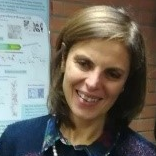Marine Oligosaccharides and Polysaccharides
A special issue of Marine Drugs (ISSN 1660-3397).
Deadline for manuscript submissions: closed (31 January 2018) | Viewed by 104073
Special Issue Editor
Interests: polysaccharides and oligosaccharides; marine extremophiles; secondary metabolites; structural elucidation; physico-chemical properties; biofilm
Special Issues, Collections and Topics in MDPI journals
Special Issue Information
Dear Colleagues,
Marine environments are a huge source of natural products. Among these, carbohydrates occupy a preeminent position, due to their potential applications as antitumorals, anticoagulants, antivirals, and immunomodulants. Many polysaccharides, produced by algae, crustaceans, bacteria, cyanobacteria, actinobacteria, and fungi, are of commercial interest, and many of them are already used in the food industry. These comprise alginates, carrageenans, fucoidans, chitin, xanthan, gellan, and pullulan. Current investigation is also focused on isolation, structural characterization and determination of the properties of new oligosaccharides and polysaccharides from seawater to be used as bio-based nanomaterials. Moreover, chemical or enzymatic modification of marine oligo- and polysaccharides in order to discover new biophysical and biochemical features, is a topic of increasing interest nowadays. As Guest Editor of this Special Issue of Marine Drugs, I invite you to provide recent advances in all the aspects of marine polysaccharides and oligosaccharides.
Prof. Maria Michela Corsaro
Guest Editor
Manuscript Submission Information
Manuscripts should be submitted online at www.mdpi.com by registering and logging in to this website. Once you are registered, click here to go to the submission form. Manuscripts can be submitted until the deadline. All submissions that pass pre-check are peer-reviewed. Accepted papers will be published continuously in the journal (as soon as accepted) and will be listed together on the special issue website. Research articles, review articles as well as short communications are invited. For planned papers, a title and short abstract (about 100 words) can be sent to the Editorial Office for announcement on this website.
Submitted manuscripts should not have been published previously, nor be under consideration for publication elsewhere (except conference proceedings papers). All manuscripts are thoroughly refereed through a single-blind peer-review process. A guide for authors and other relevant information for submission of manuscripts is available on the Instructions for Authors page. Marine Drugs is an international peer-reviewed open access monthly journal published by MDPI.
Please visit the Instructions for Authors page before submitting a manuscript. The Article Processing Charge (APC) for publication in this open access journal is 2900 CHF (Swiss Francs). Submitted papers should be well formatted and use good English. Authors may use MDPI's English editing service prior to publication or during author revisions.
Keywords
Polysaccharides
Oligosaccharides
Chemical modification
Structural characterization
Glycobiology
Biological activity
Related Special Issue
- Marine Oligosaccharides and Polysaccharides 2.0 in Marine Drugs (5 articles)






